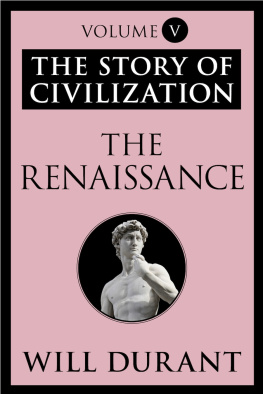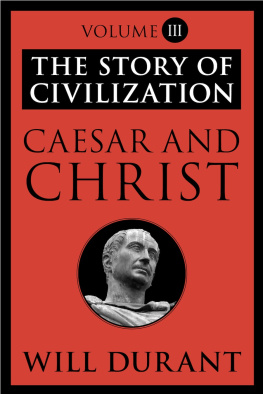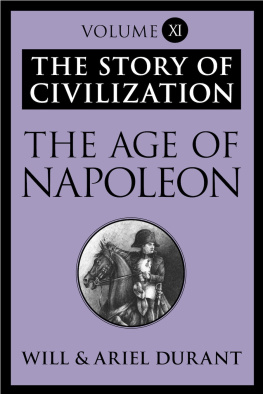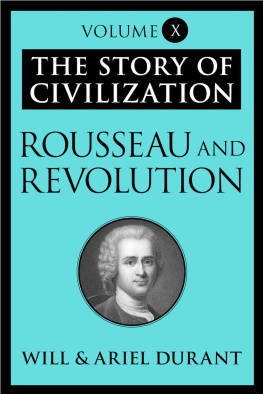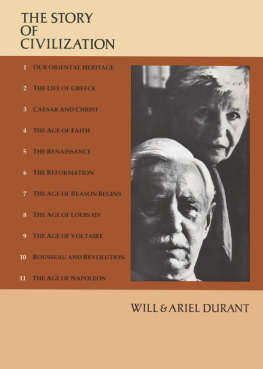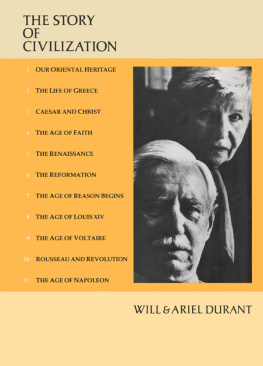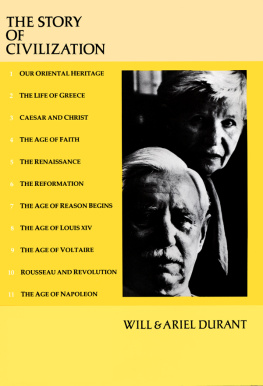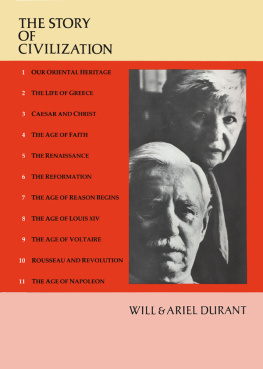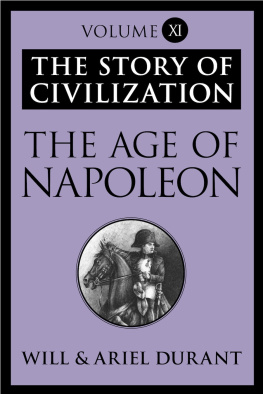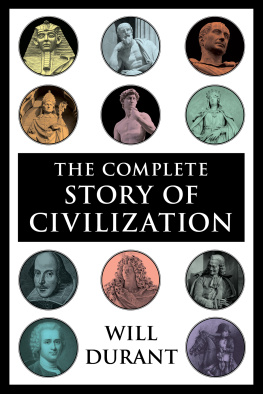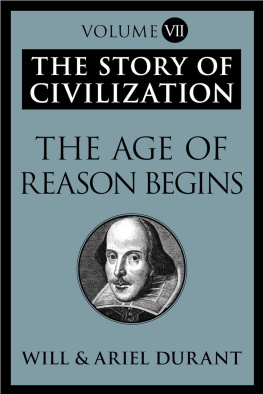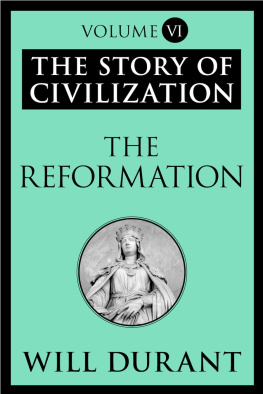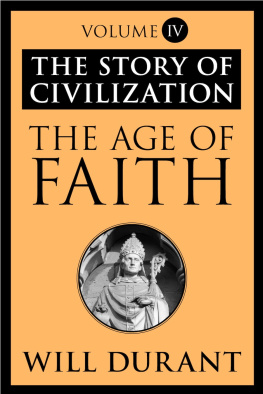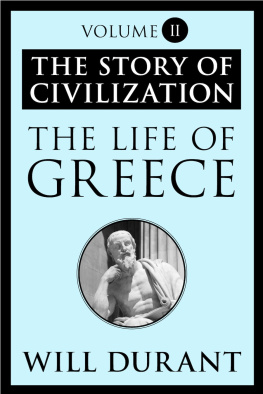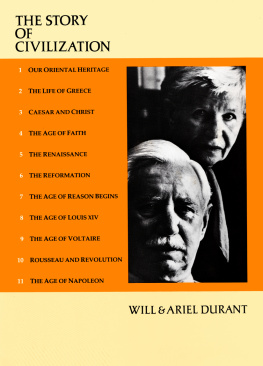Will Durant - The Story of Civilization Volume V: The Renaissance
Here you can read online Will Durant - The Story of Civilization Volume V: The Renaissance full text of the book (entire story) in english for free. Download pdf and epub, get meaning, cover and reviews about this ebook. year: 0, publisher: Simon & Schuster, genre: History. Description of the work, (preface) as well as reviews are available. Best literature library LitArk.com created for fans of good reading and offers a wide selection of genres:
Romance novel
Science fiction
Adventure
Detective
Science
History
Home and family
Prose
Art
Politics
Computer
Non-fiction
Religion
Business
Children
Humor
Choose a favorite category and find really read worthwhile books. Enjoy immersion in the world of imagination, feel the emotions of the characters or learn something new for yourself, make an fascinating discovery.
- Book:The Story of Civilization Volume V: The Renaissance
- Author:
- Publisher:Simon & Schuster
- Genre:
- Year:0
- Rating:4 / 5
- Favourites:Add to favourites
- Your mark:
- 80
- 1
- 2
- 3
- 4
- 5
The Story of Civilization Volume V: The Renaissance: summary, description and annotation
We offer to read an annotation, description, summary or preface (depends on what the author of the book "The Story of Civilization Volume V: The Renaissance" wrote himself). If you haven't found the necessary information about the book — write in the comments, we will try to find it.
The Story of Civilization Volume V: The Renaissance — read online for free the complete book (whole text) full work
Below is the text of the book, divided by pages. System saving the place of the last page read, allows you to conveniently read the book "The Story of Civilization Volume V: The Renaissance" online for free, without having to search again every time where you left off. Put a bookmark, and you can go to the page where you finished reading at any time.
Font size:
Interval:
Bookmark:

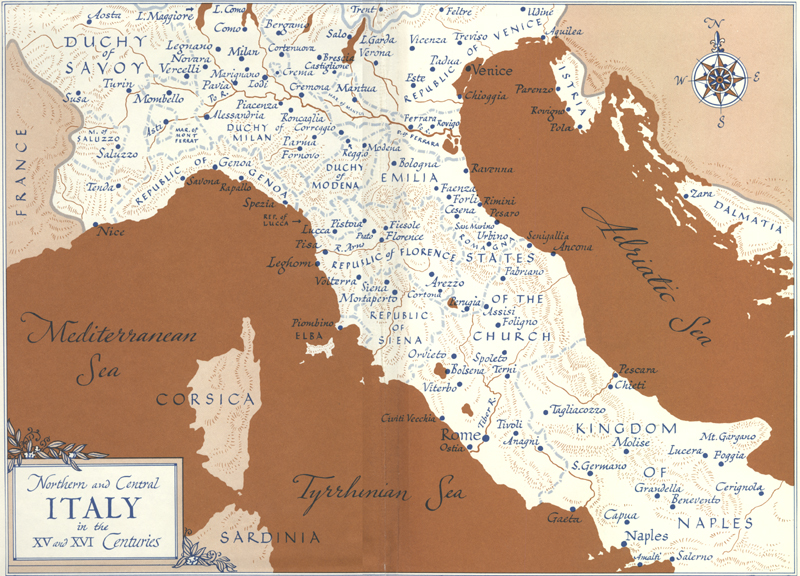
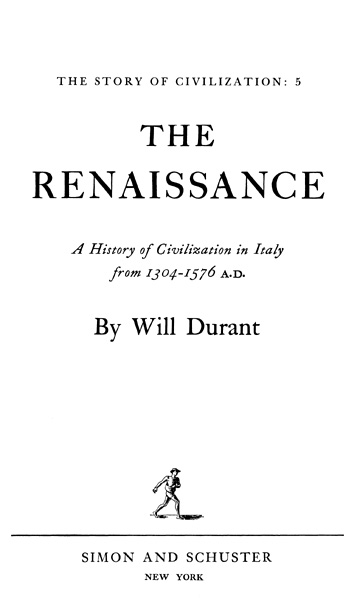
TO MY WIFE
Who has shared in a hundred ways
in writing this book
T HIS volume, while complete and independent in itself, forms Part V in a history of civilization written on the integral method of uniting in one narrative all phases of human activity. The series began in 1935 with Our Oriental Heritagea history of Egypt and the Near and Middle East to 323 B.C , and of India, China, and Japan to 1930. Part II, The Life of Greece (1939), recorded Greek history and culture from the beginnings, and the history of the Near and Middle East from 323 B.C ., to the Roman Conquest in 146 B.C . Part III, Caesar and Christ (1944), carried the story of white civilization to A.D . 325, centered around the rise and fall of Rome, and the first centuries of Christianity. Part IV, The Age of Faith (1950), continued the narrative to 1300, including Byzantine civilization, Islam, Judaism, and Latin Christendom.
The present work aims to give a rounded picture of all phases of human life in the Italy of the Renaissancefrom the birth of Petrarch in 1304 to the death of Titian in 1576. The term Renaissance will in this book refer only to Italy. The word does not properly apply to such native maturations, rather than exotic rebirths, as took place in France, Spain, England, and the Lowlands in the sixteenth and seventeenth centuries; and even in Italy the designation lays undue stress on that revival of classic letters which was of less importance to Italy than the ripening of its economy and culture into their own characteristic forms.
In order to avoid a superficial repetition of the excellent books already in print on this subject, the scale of treatment has been enlarged as compared with the previous volumes in the series. Moreover, as we approach our own epoch our interests are more widely engaged; we still feel in our blood the sap of those effervescent centuries in which modern Europe began; and their ideas, events, and personalities are especially vital to an understanding of our own minds and times.
I have studied at first hand nearly all the works of art mentioned in this book, but I lack the technical training that would give me the right to express any critical judgments. I have ventured, however, to voice my impressions and preferences. Modern art is absorbed in a forgivable reaction against the Renaissance, and is zealously experimenting to find new forms of beauty or significance. Our appreciation of the Renaissance should not deter us from welcoming every sincere and disciplined attempt to imitate not its products but its originality.
If circumstances permit, a sixth volume, probably under the title of The Age of the Reformation, will appear three or four years hence, covering the history of Christian, Islamic, and Judaic civilization outside of Italy from 1300, and in Italy from 1576 to 1648. The enlarged scale of treatment, and the imminence of senility, make it advisable to plan an end of the series with a seventh volume, The Age of Reason, which may carry the tale to the beginning of the nineteenth century.
Acknowledgments are due to Mr. Joseph Auslander for permission to quote his fine translation of a sonnet by Petrarch; to the Cambridge University Press for permission to quote a paragraph by Richard Garnett from Volume I of The Cambridge Modern History; to my wife for a hundred illuminating suggestions and conversations; to Dr. C. Edward Hopkin for aid in classifying the material; to Miss Mary Kaufman and Miss Flora Kaufman for varied clerical assistance; to Mrs. Edith Digate for her highly competent typing of a difficult manuscript; and to Wallace Brockway for expert editing and advice.
A tardy acknowledgment is due to my publishers. In my long association with them I have found them ideal. They have given me every consideration, have shared with me the expenses of research, and have never let calculations of profit or loss determine our relations. In 1926 they published my Story of Philosophy hoping only to break even. We have been together now for twenty-seven years; and it has been for me a fortunate and happy union.
1. Dates of birth and death are omitted from the text, but will be found in the index.
2. Passages in reduced type are for students and may be safely omitted by the general reader.
3. In locating works of art the name of the city will be used to indicate its leading picture gallery, e.g.:
Bergamo, the Accademia Carrara;
Berlin, the Kaiser-Friedrich Museum;
Brescia, the Pinacoteca Martinengo;
Chicago, the Art Institute;
Cleveland, the Museum of Art;
Detroit, the Institute of Art;
Leningrad, the Hermitage;
London, the National Gallery;
Madrid, the Prado;
Mantua, the Palazzo Ducale;
Milan, the Brera Gallery;
Modena, the Pinacoteca Estense;
Naples, the Museo Nazionale;
New York, the Metropolitan Museum of Art;
Parma, the Royal Gallery;
Venice, the Academy;
Washington, the National Gallery; but the great galleries of Florence will be distinguished by their names, Uffizi and Pitti, as will the Borghese in Rome.
W ILL D URANT
Los Angeles, December 1, 1952
The page number referred to in the captions is for a discussion of the particular painting or the artist, and sometimes both.
Part I. This section follows page 64
Part II. This section follows page 224
Part III. This section follows page 384
Part IV. This section follows page 608
PRELUDE
130077
The Age of Petrarch and Boccaccio
130475
I N that same year 1302 in which the aristocratic party of the neri (Blacks), having seized the government of Florence by force, exiled Dante and other middle-class bianchi (Whites), the triumphant oligarchy indicted a White lawyer, Ser (i.e., Messer or Master) Petracco on the charge of having falsified a legal document. Branding the accusation as a device for ending his political career, Petracco refused to stand for trial. He was convicted in absence, and was given the choice of paying a heavy fine or having his right hand cut off. As he still refused to appear before the court, he was banished from Florence, and suffered the confiscation of his property. Taking his young wife with him, he fled to Arezzo. There, two years later, Francesco Petrarca (as he later euphonized his name) burst upon the world.
Predominantly Ghibellineyielding political allegiance to the emperors of the Holy Roman Empire rather than to the popeslittle Arezzo experienced in the fourteenth century all the tribulations of an Italian city. Guelfic Florencesupporting the popes against the emperors in the struggle for political authority in Italyhad overwhelmed Arezzo at Campaldino (1289), where Dante fought; in 1340 all Aretine Ghibellines between thirteen and seventy were exiled; and in 1384 Arezzo fell permanently under Florentine rule. There, in ancient days, Maecenas had been born; there the fifteenth and sixteenth centuries would see the birth of Giorgio Vasari, who made the Renaissance famous, and of Pietro Aretino, who for a while made it infamous. Every town in Italy has fathered genius, and banished it.
Font size:
Interval:
Bookmark:
Similar books «The Story of Civilization Volume V: The Renaissance»
Look at similar books to The Story of Civilization Volume V: The Renaissance. We have selected literature similar in name and meaning in the hope of providing readers with more options to find new, interesting, not yet read works.
Discussion, reviews of the book The Story of Civilization Volume V: The Renaissance and just readers' own opinions. Leave your comments, write what you think about the work, its meaning or the main characters. Specify what exactly you liked and what you didn't like, and why you think so.

